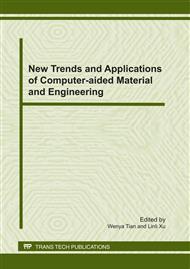p.552
p.556
p.560
p.565
p.570
p.576
p.581
p.586
p.591
Research on the Vehicle Routing Problem with Fuzzy Demands
Abstract:
In this paper, the vehicle routing problem with fuzzy demands is considered, and a fuzzy chance constrained programming mathematical model is established based on fuzzy possibility theory. Then fuzzy simulation and differential evolution algorithm are integrated to design a hybrid intelligent algorithm to solve the fuzzy vehicle routing model. Moreover, under the target that the total driving distance of vehicles is the shortest, the influence of the decision-maker’s preference on the final objective of the problem is discussed using the method of stochastic simulation, and the rational range of the preference number is obtained.
Info:
Periodical:
Pages:
570-575
Citation:
Online since:
January 2011
Authors:
Price:
Сopyright:
© 2011 Trans Tech Publications Ltd. All Rights Reserved
Share:
Citation:


